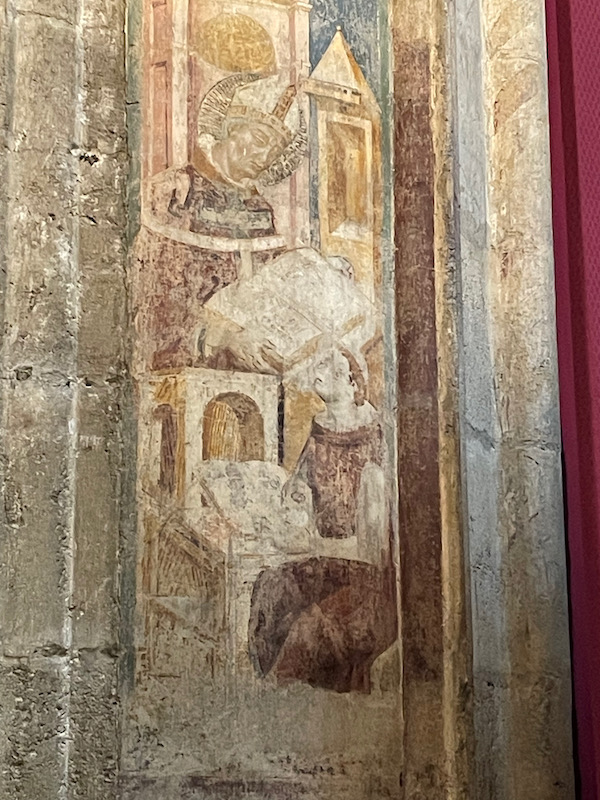Our Blog - Narbonne, France
This isn't the first time we've been to Narbonne, but we had missed a couple things during our previous trip to Narbonne in 2021 that we wanted to try to see during this trip.
The main point of the trip was the Horreum, which is a museum with underground galleries that were built underneath a Roman building from the 1st century BC. We happened to go on a weekend that was a special "archeological" weekend, and so the entry AND the guided visit (in French) was free. What luck! And we went in not having any knowledge of the guided tour times, and we happened to pick up one that was just starting. There are 3 wings (north, west, and south), each with a central corridor and small rooms on both sides. The underground walls were built according to several typical Roman masonry structures made of limestone rubble bound with mortar, and then load-bearing columns and over the doors are solid stone.
The tunnels were officially "known" to the archeological commission here in 1838 but they had been used before that time by the people living above. They had found the tunnels, most likely when digging the foundations for their houses, and used the tunnels as their own personal cellars. The first excavations were done in 1938 but it was difficult to truly understand the complex due to a bunch of collapsed vaults and the damage done by people making their cellars. It was not until the 1960s that the tunnel complex was mapped to what it would have looked like in the 1st century.
We started in the courtyard, where there are several molds of marble tablets that were found in Narbonne during various excavations. This first one was found in 1729 inside of a wall in the Cathedral of Narbonne. Dated 164, it is dedicated to Lucius Verus, who was associated with Emperor Marcus Aurelius.
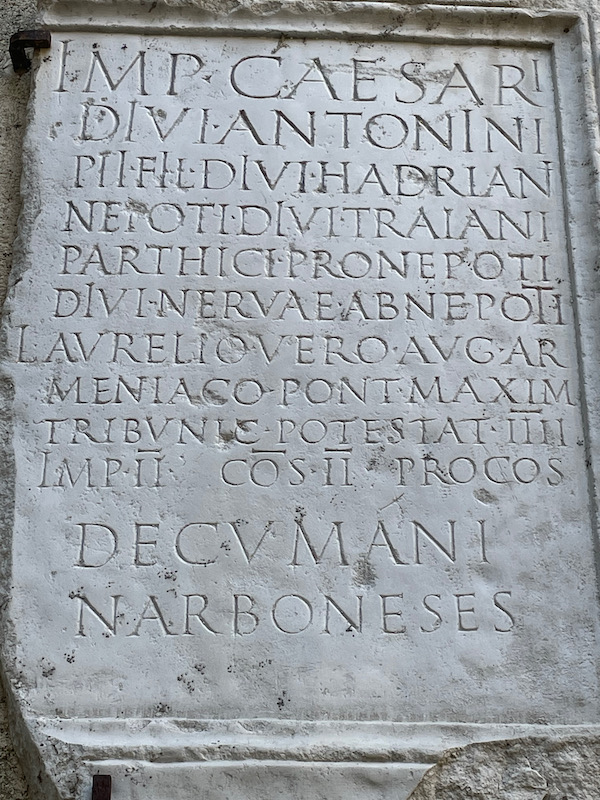
An altar dedicated to the Augustus, or more precisely, to the Peace provided by the Emperor. PAX AVG is short for PAX Augusti with PAX meaning Peace. On the bottom, it has "T. Domitius Romulus" witness to the development of the imperial cult at Narbonne.
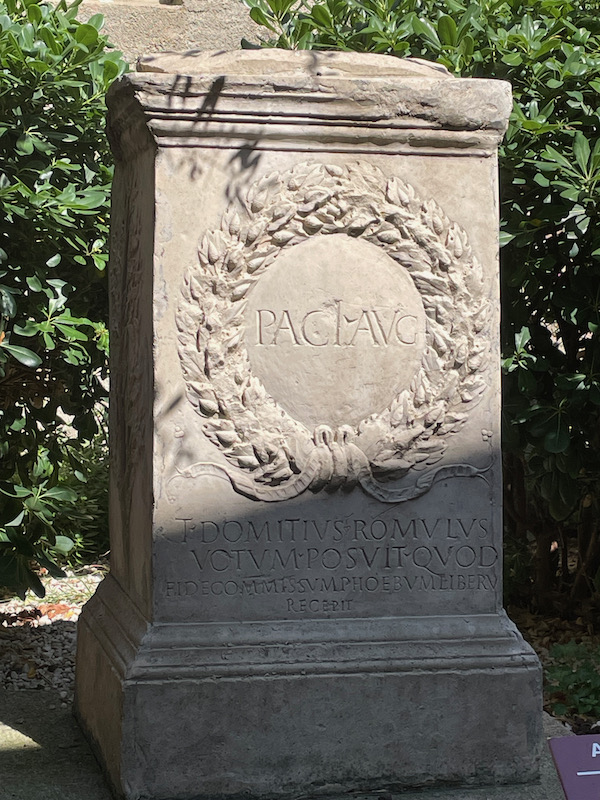
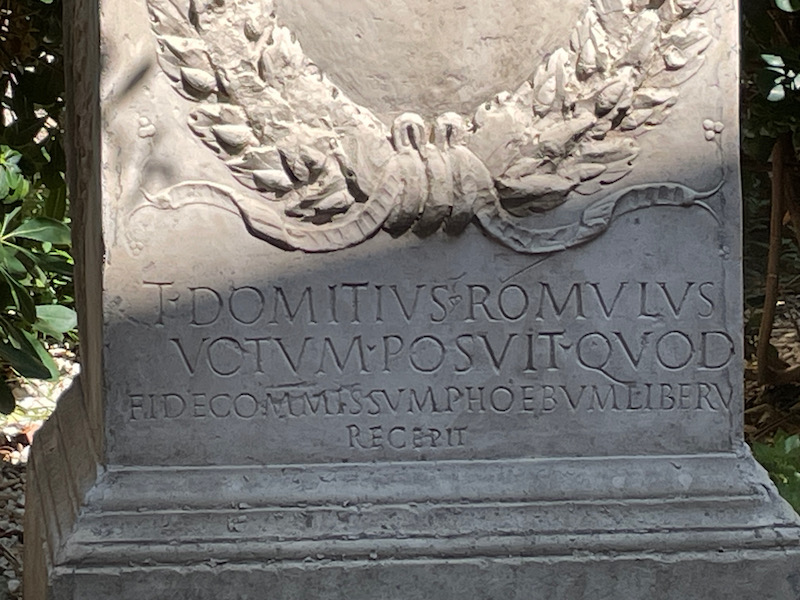
Inside, there is a map that shows Roman Narbonne along with a few pieces of current Narbonne. Near the bottom, you can see the river and the where the original Roman bridge was. The solid pieces are Roman ruins that have actually been found. Just over the bridge, next to the Hotel de Ville (City Hall), is a small dark square that shows where a portion of the original Roman "Via Domitia" or Domitian Way. It was the Roman road built from 118 BC to connect Italy to the Iberian Peninsula by crossing Narbonne Gaul. Following that road up, you reach the center of the Roman city, the Forum and the temple.
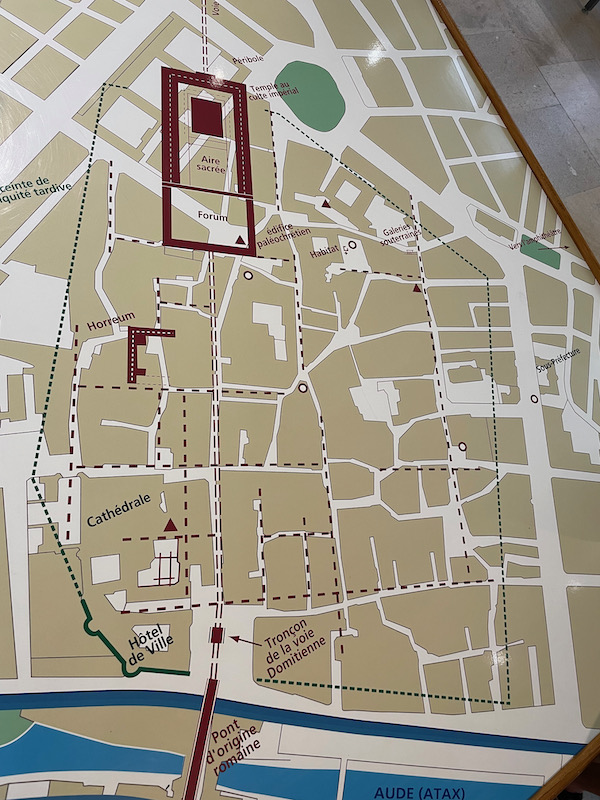
A bit closer, you can see middle-left an L-shaped dark section, the Horreum, which are these underground galleries. While most of the antiquities are in the Narbonne museum, there were a few things in this museum, including these oil lamps from the 1st and 2nd centuries. Then a mold of a bas-relief showing a boat with the sails out, and a set of Roman terra cotta jugs.
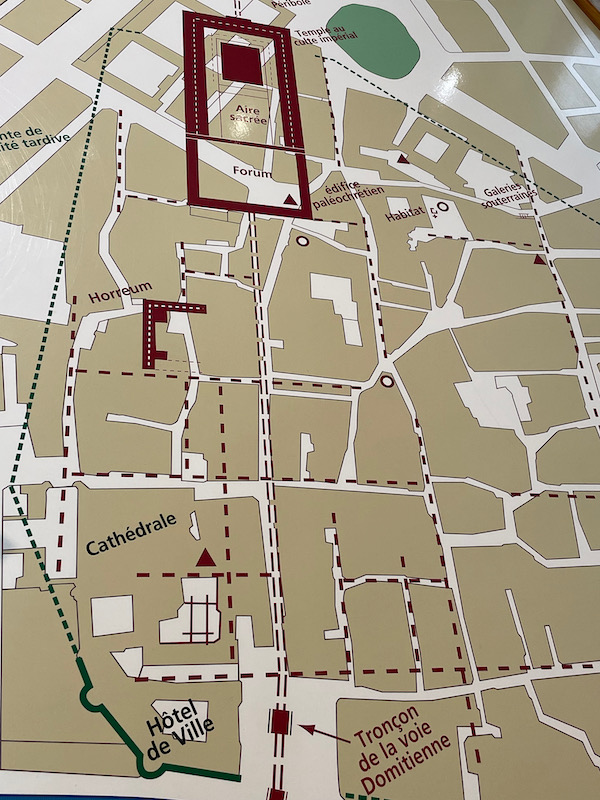
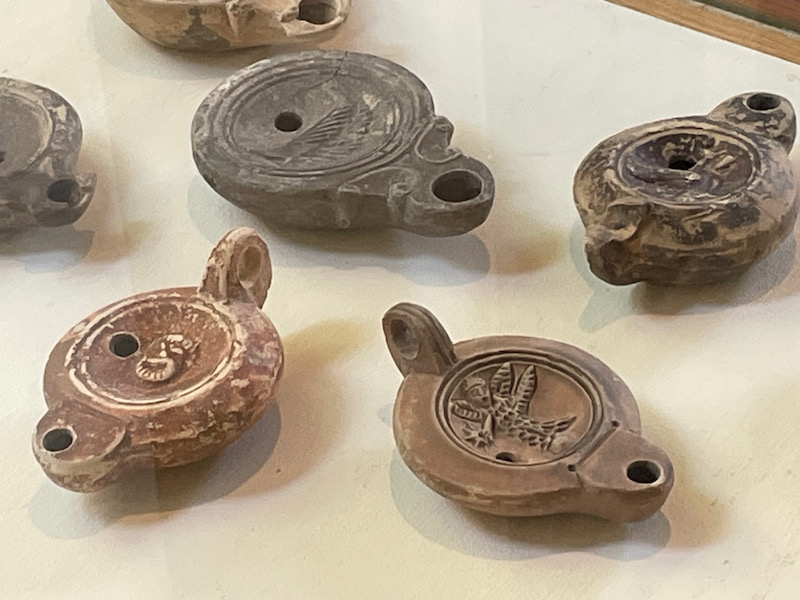
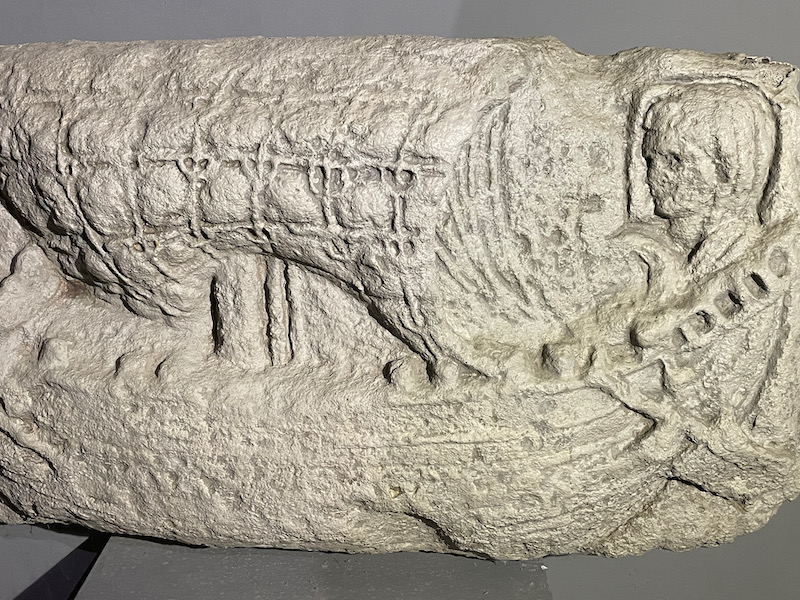
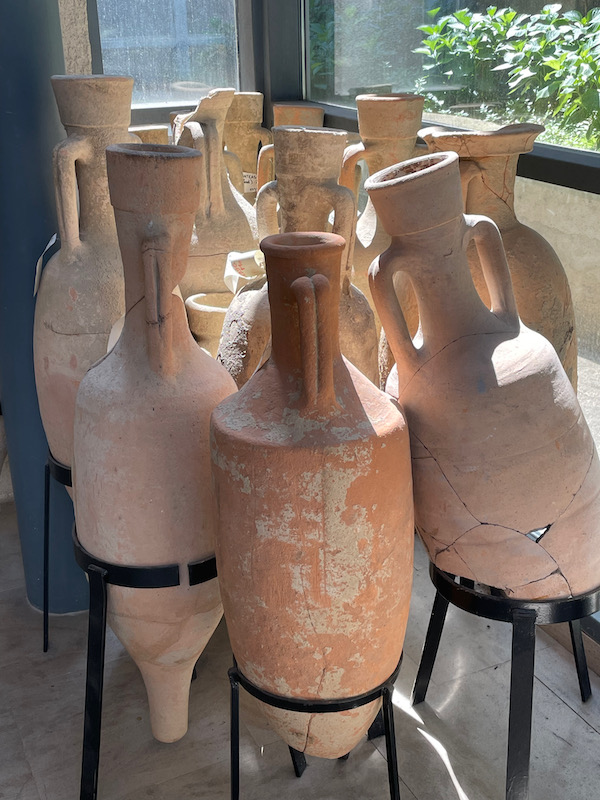
And now, down we go into the underground galleries.
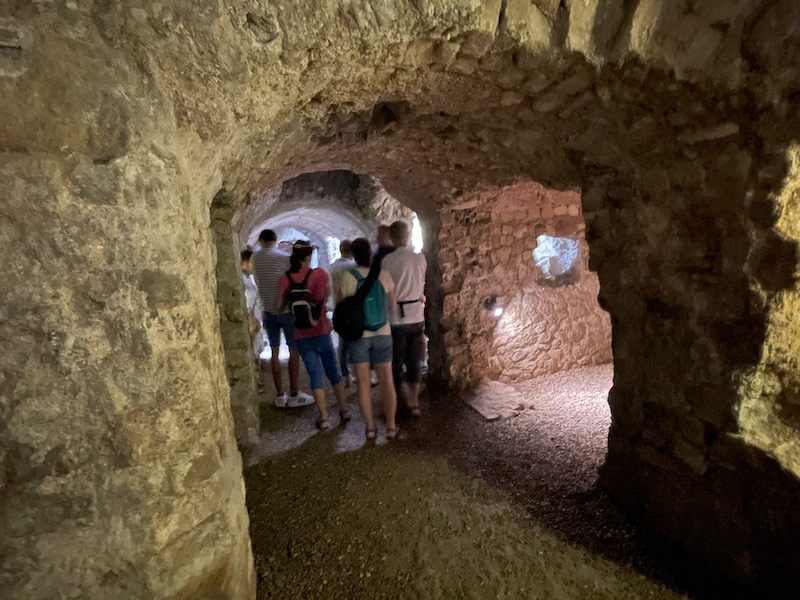
Not the best video, but I was trying to move around and show a bit of how these galleries are made up. There is the central corridor and then small rooms on either side. Some of the rooms have displays that would show how these may have been used. For example, someone selling terra cotta jugs or baskets. And then a picture of another small room filled with remains of jars.
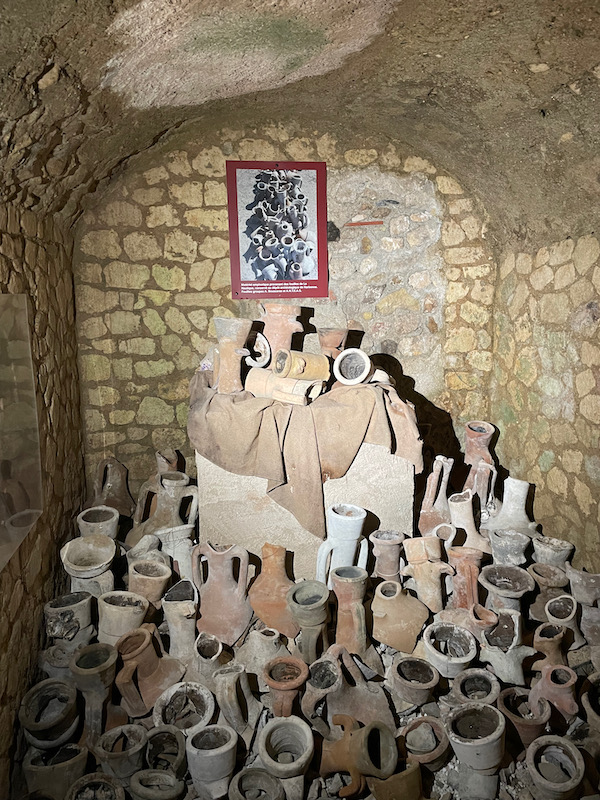
This is a re-creation of a floor that is made up of small terra cotta bricks, placed in a very unique pattern.
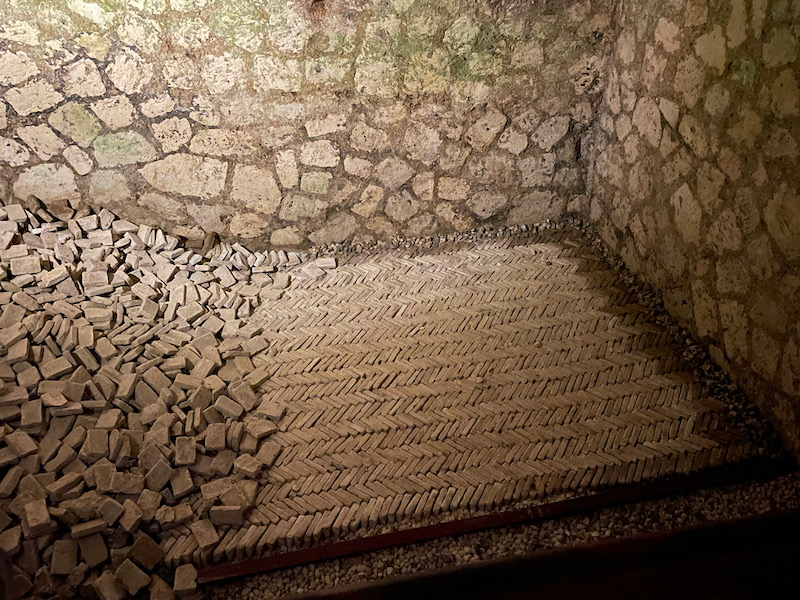
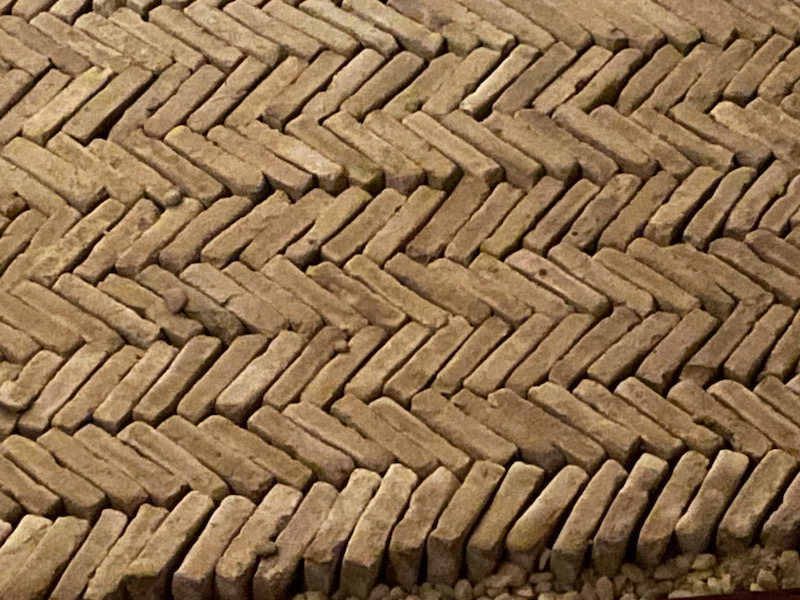
Again, not the best video since the light is a bit odd down there ... some places are quite dark while others are lit up.
This is an example of most of the walls ... smaller stones with mortar. Some walls are very "irregular" with the stones going any which way, while others are quite regular, with all fo the stones in horizontal and vertical lines.
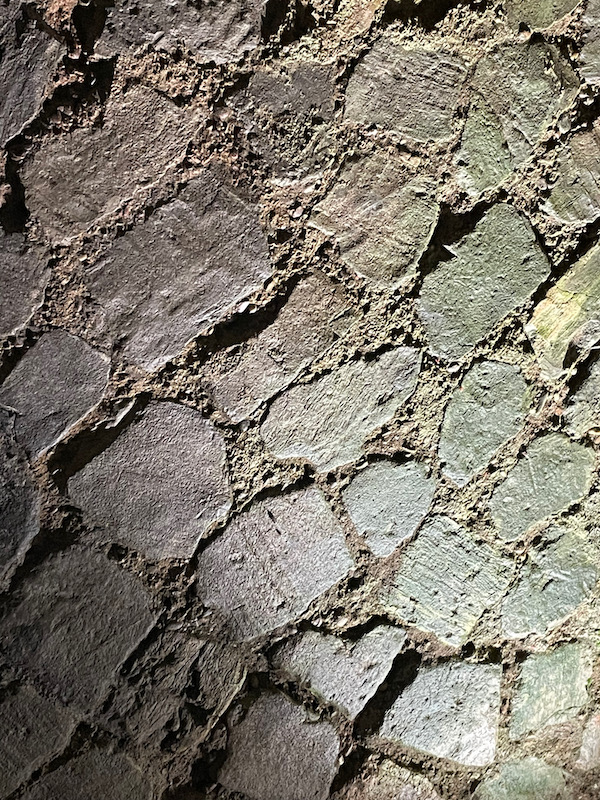
As you can see, most of the walls are made up of smaller stones but then above the doorways, there are these massive stones to hold up all of the weight above. You can also see parts of other walls that are also large stones, normally 3 of them placed on top of each other to form a load-bearing portion of the wall.
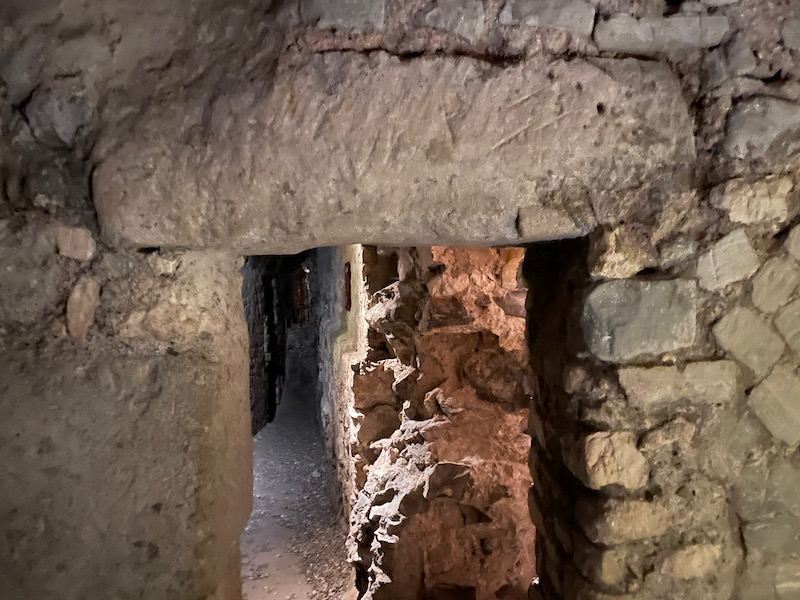
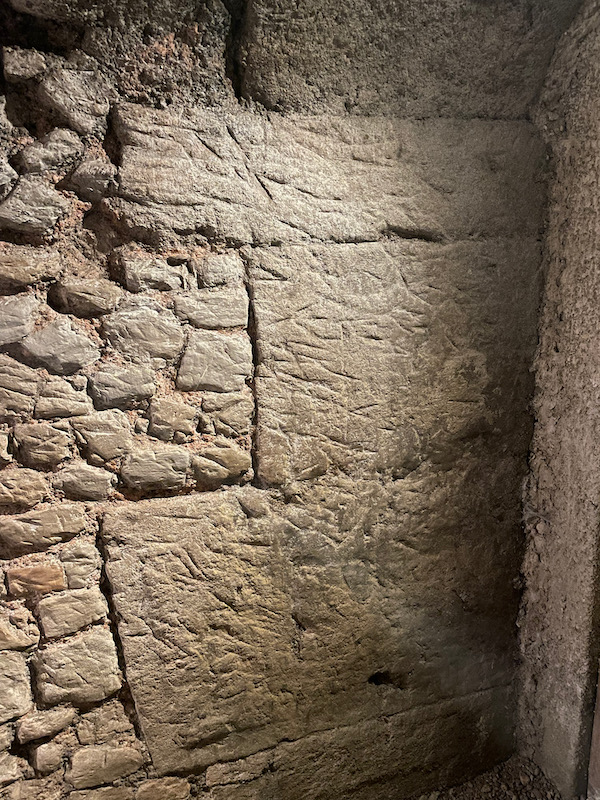
I'll finish with some random pictures of the final section of the tunnels that we went through to try to give you a better idea of them.
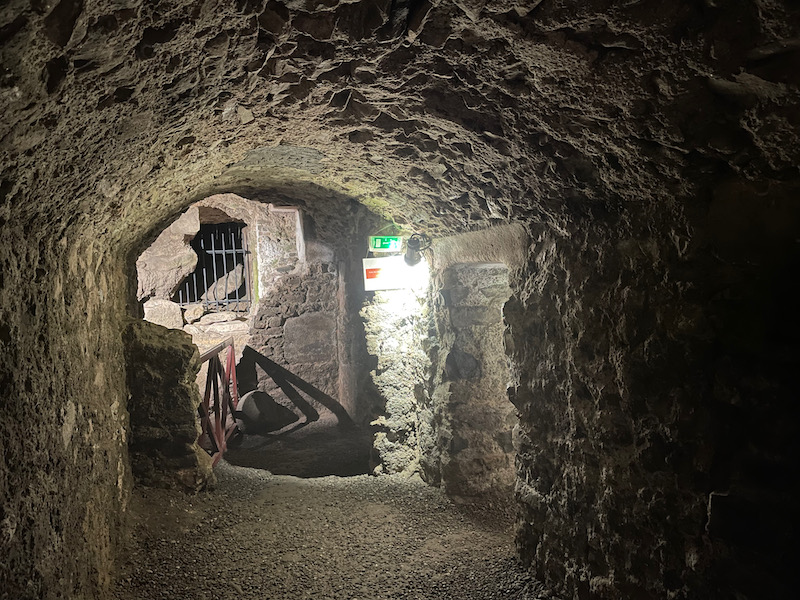
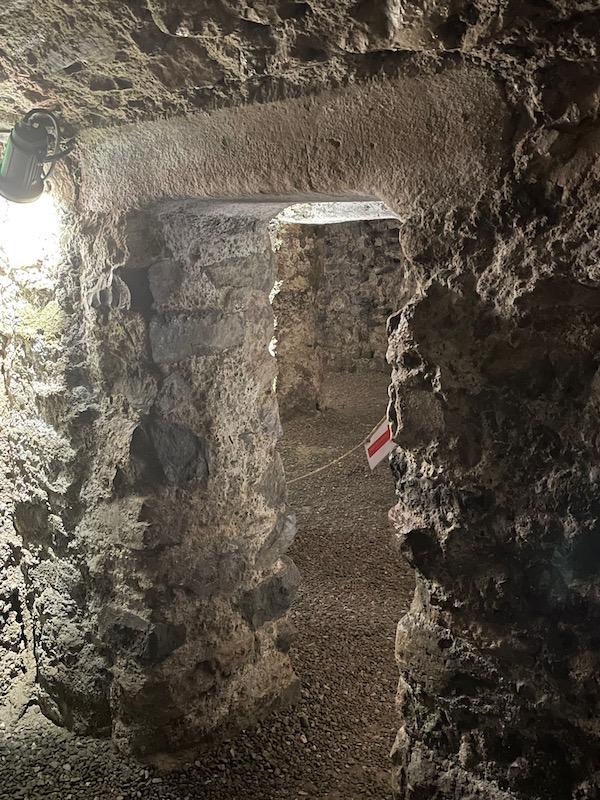
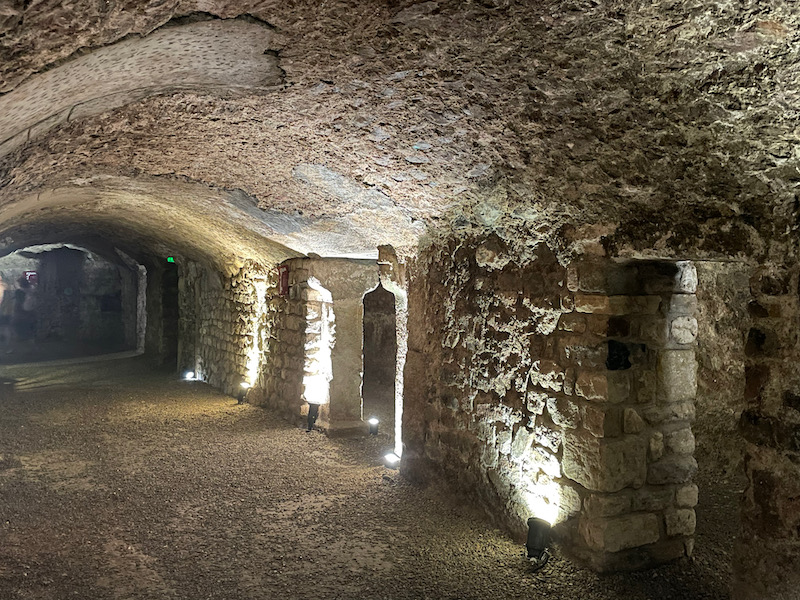
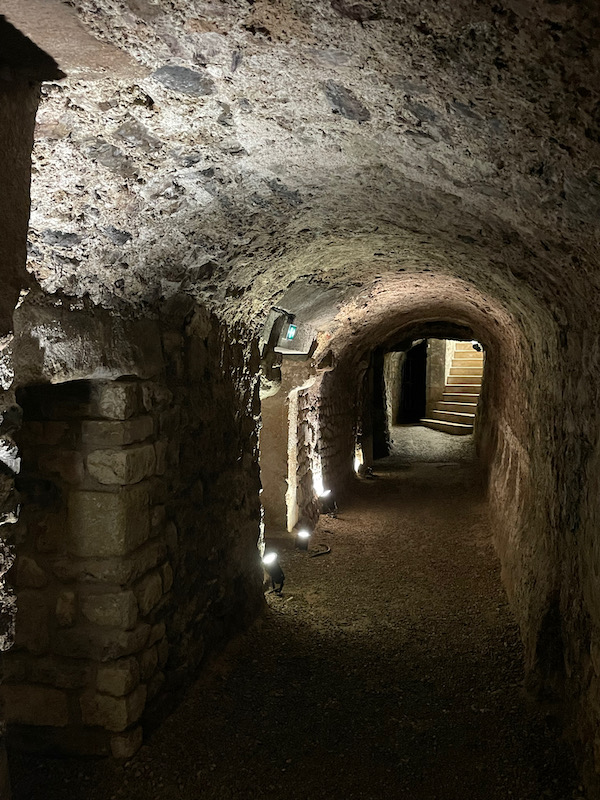
Then we headed across town to the market to have lunch, crossing over the main square with the Palace of the Archbishops, which is now City Hall.
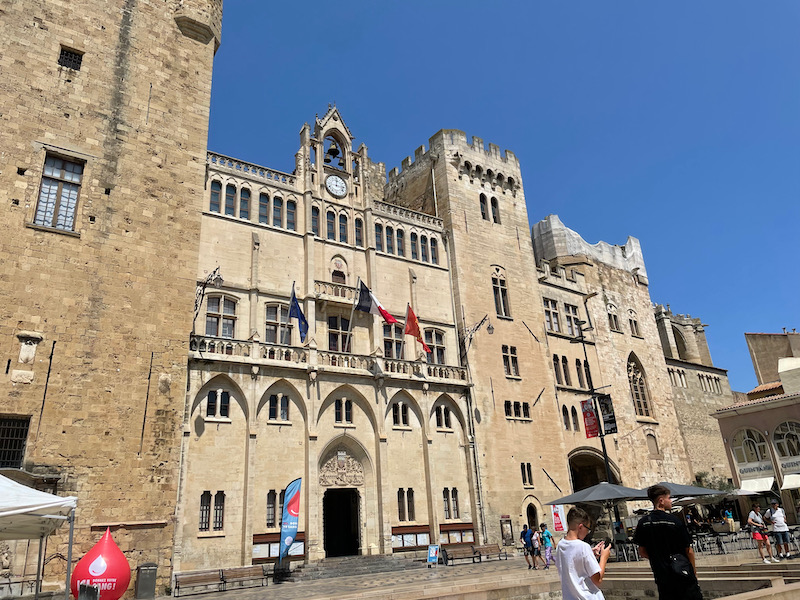
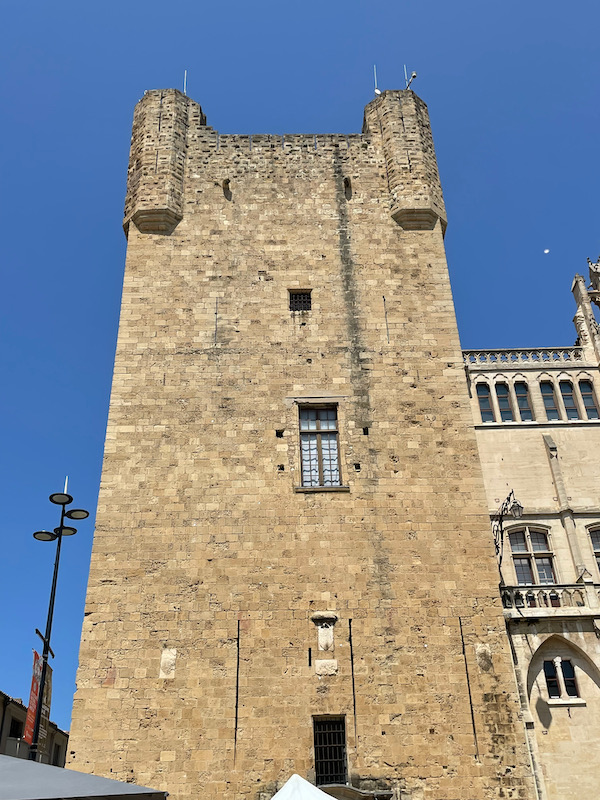
Then back after lunch to the Cathedral Saint-Just and Saint-Pasteur. Last time we came here, the cloister and garden were closed but it happened to be open today, so we could go in and take a peek. The Cloister was built during the 2nd part of the 14th century with 4 galleries with buttresses and gargoyles. The tops of the buttresses and what looks like a good portion of the gargoyles have been restored. You can see that in the last picture ... notice the texture difference of the stones below the level of the gargoyles and above them.
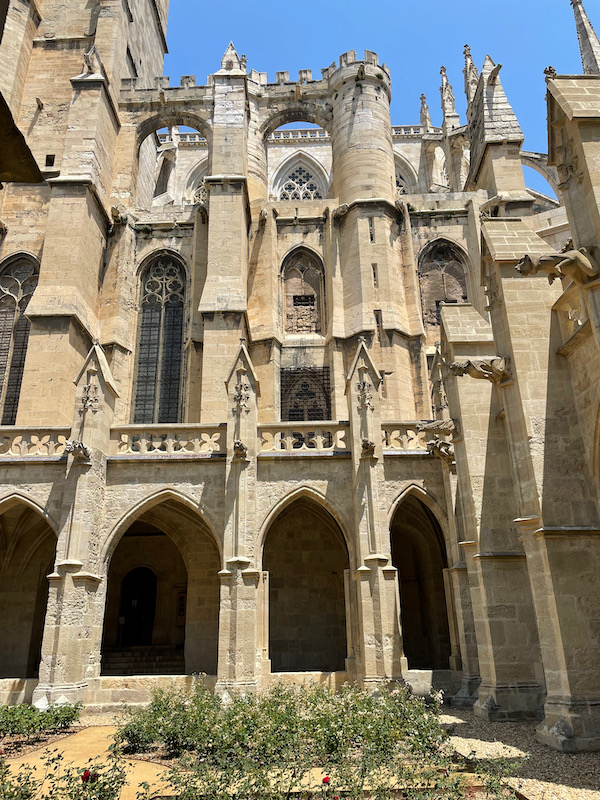
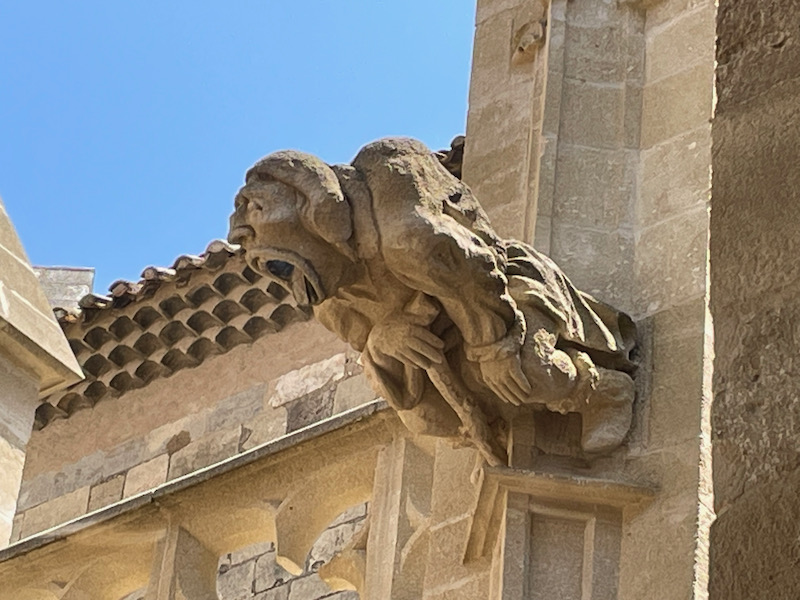
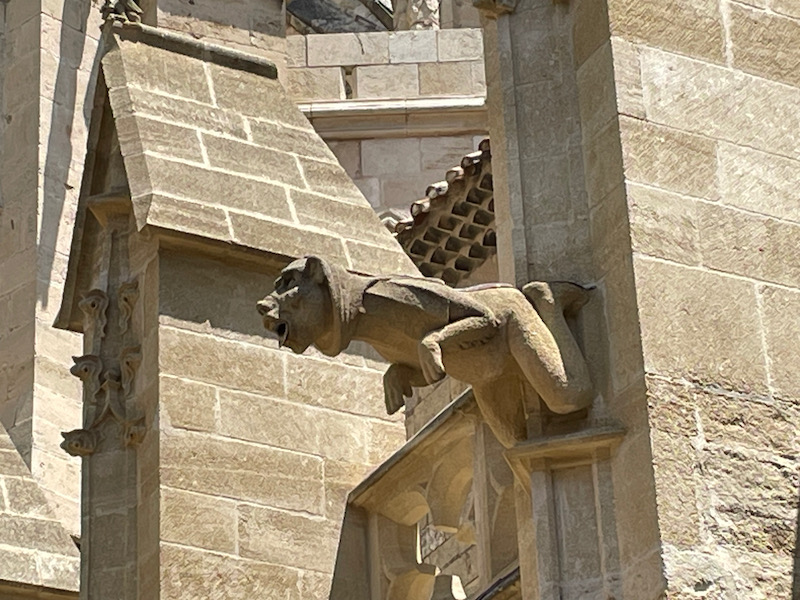
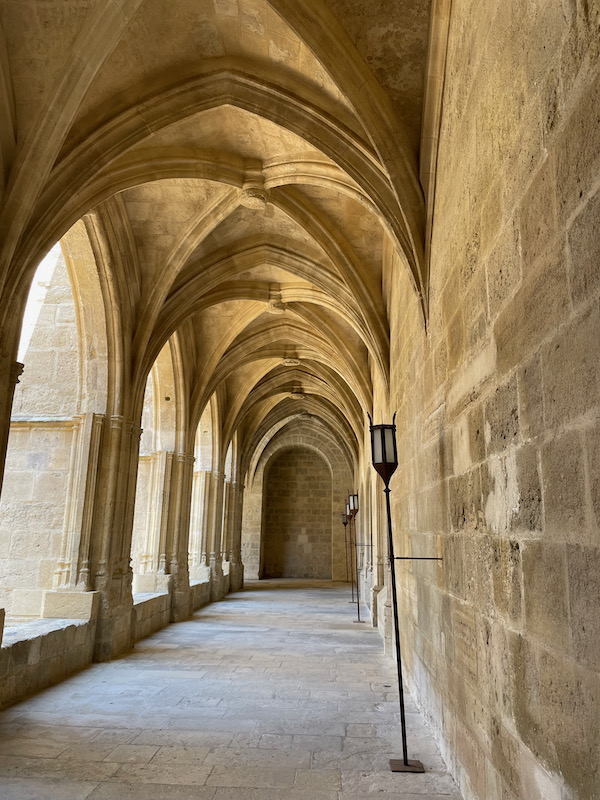
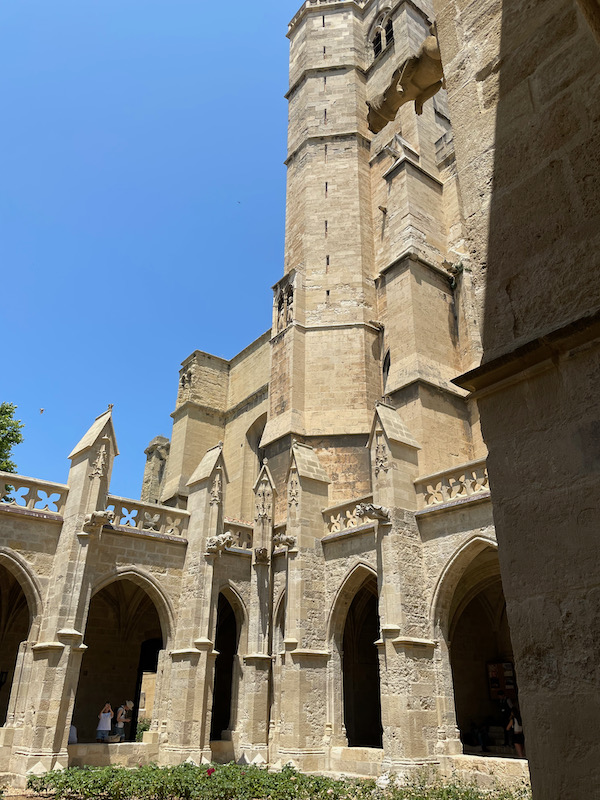
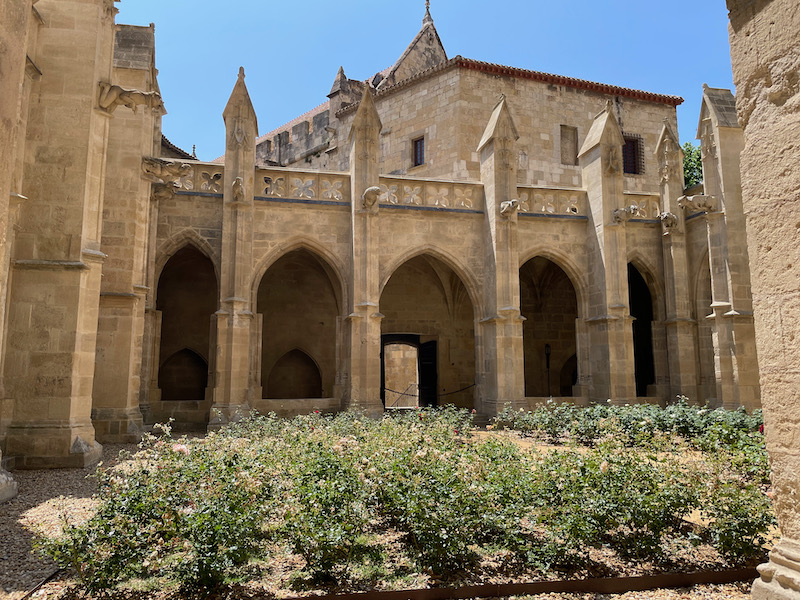
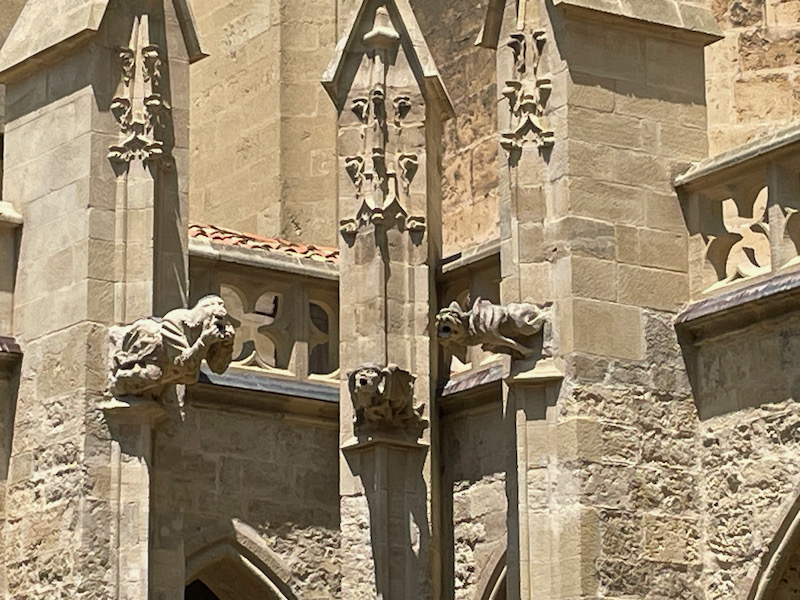
Then we headed back into the Cathedral, even though we had done a more extensive tour of it last time we were in Narbonne.
One thing that is impressive here are a set of tapestries that are hanging around the choir ... I have 2 of them here.
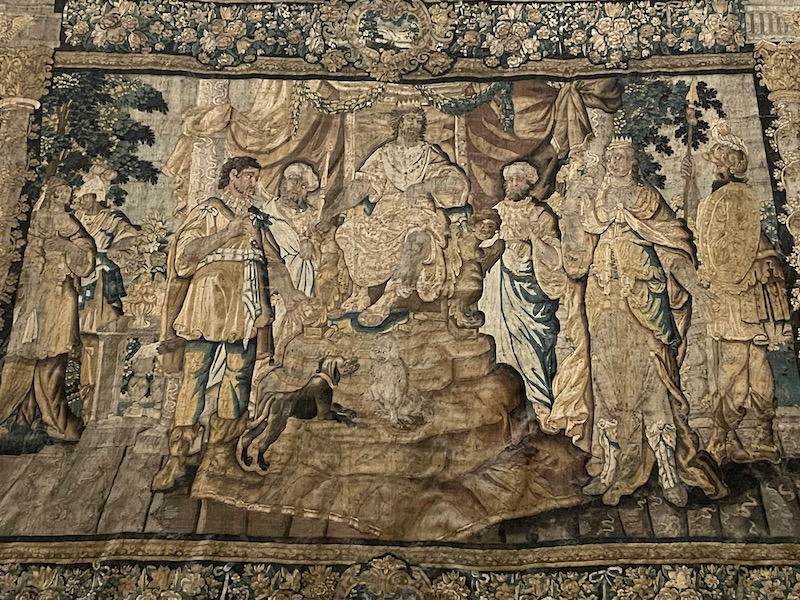
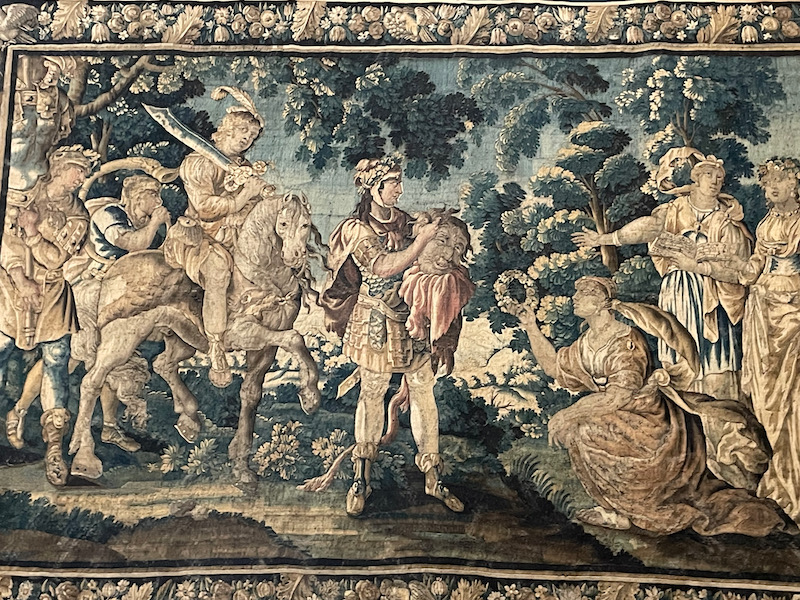
Forming the exterior of the choir screen are the tombs of several Archbishops
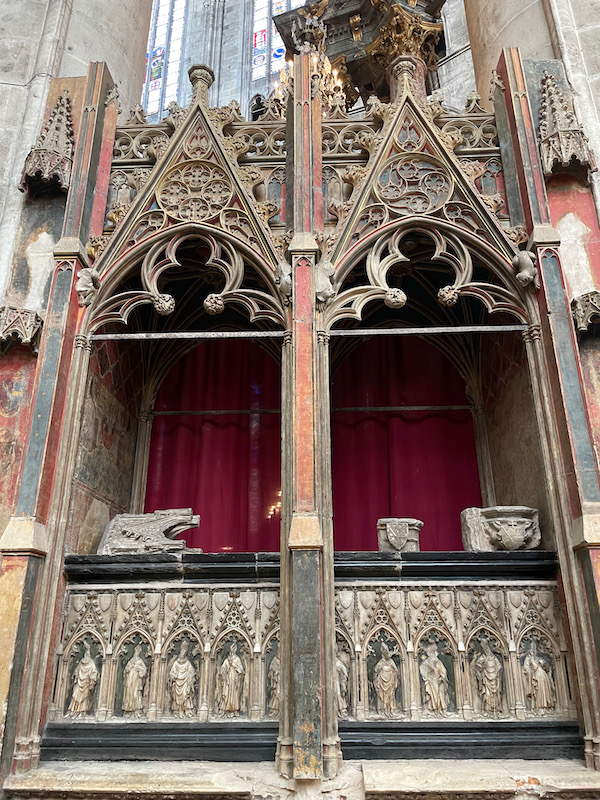
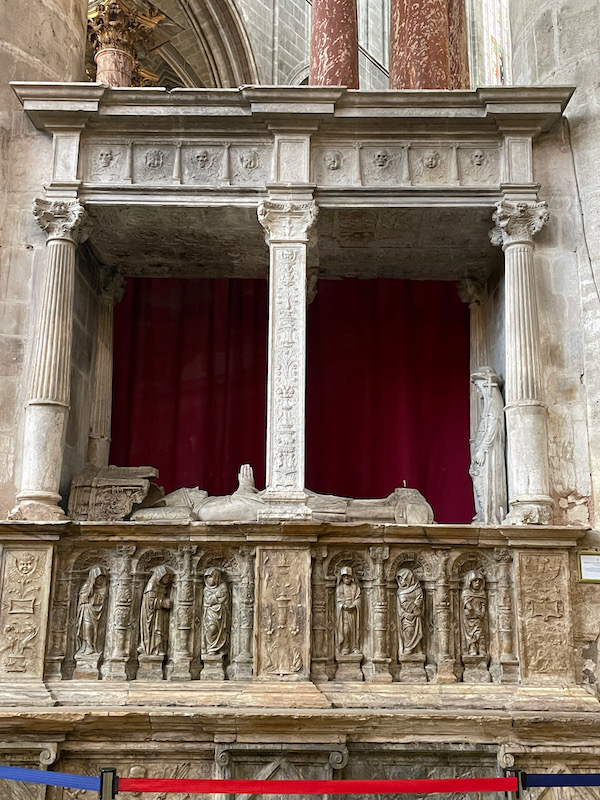
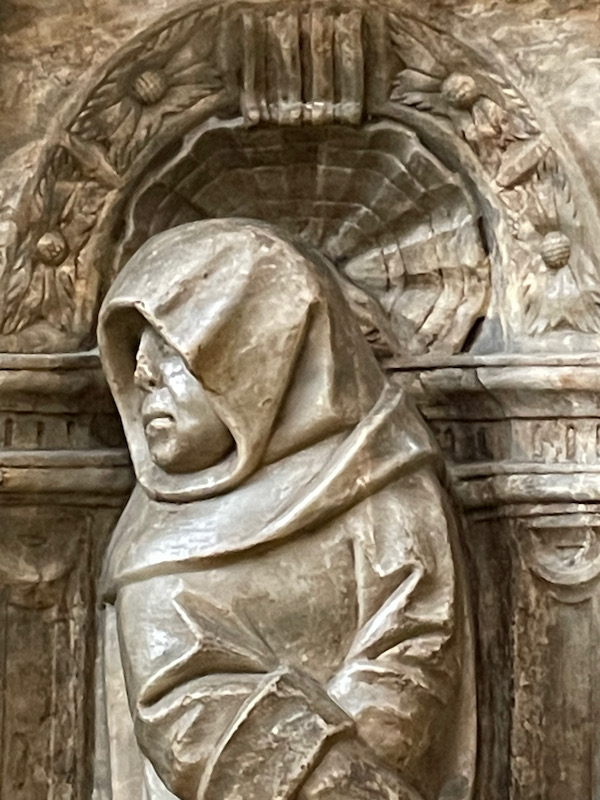
There are lots of chapels but the most interesting one for me was the Chapel of Our Lady of Bethlehem, which has been partially restored. The polychrome stone table dates from the 14th century and was found broken into pieces under a set of 18th century marble panels. It took 10 years to restore although it still is missing quite a bit. There are 3 levels with more than 200 characters.
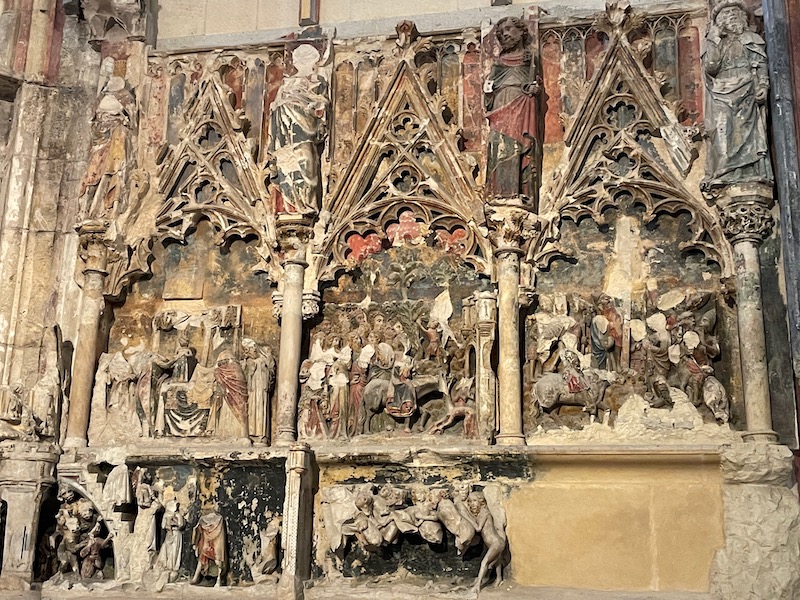
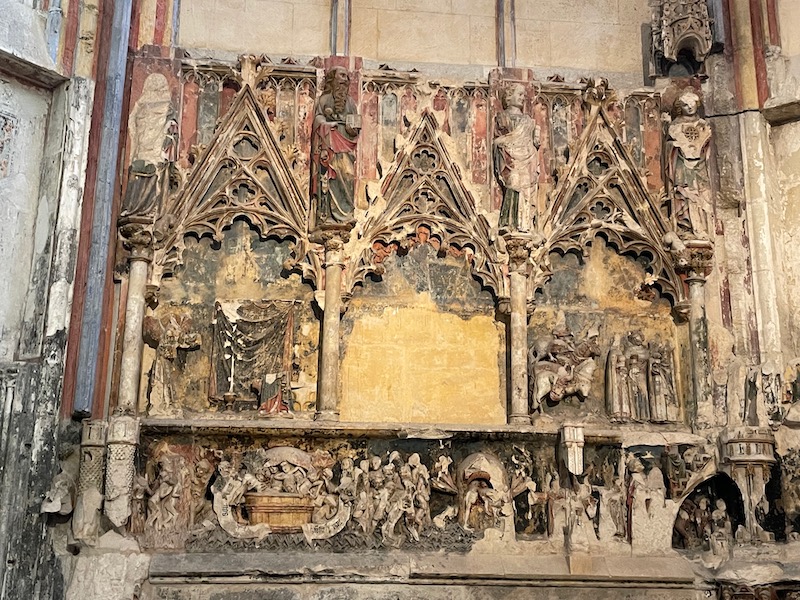
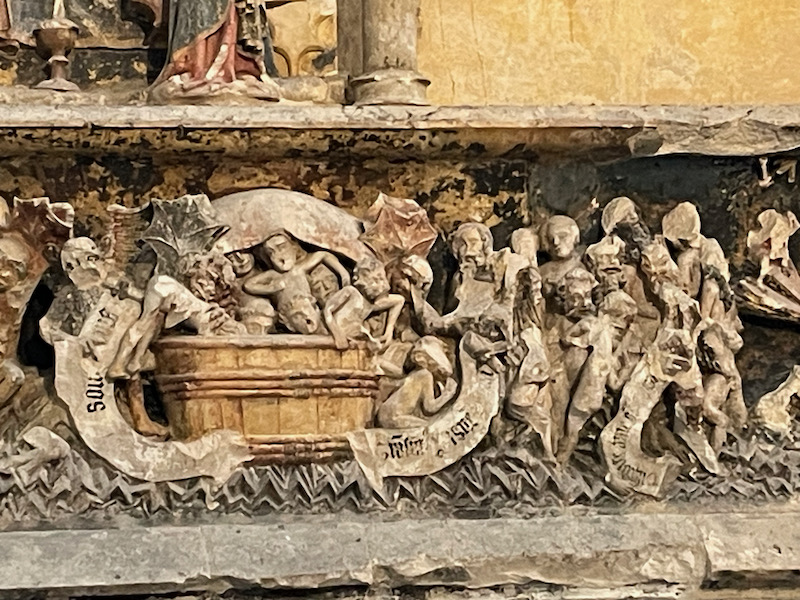
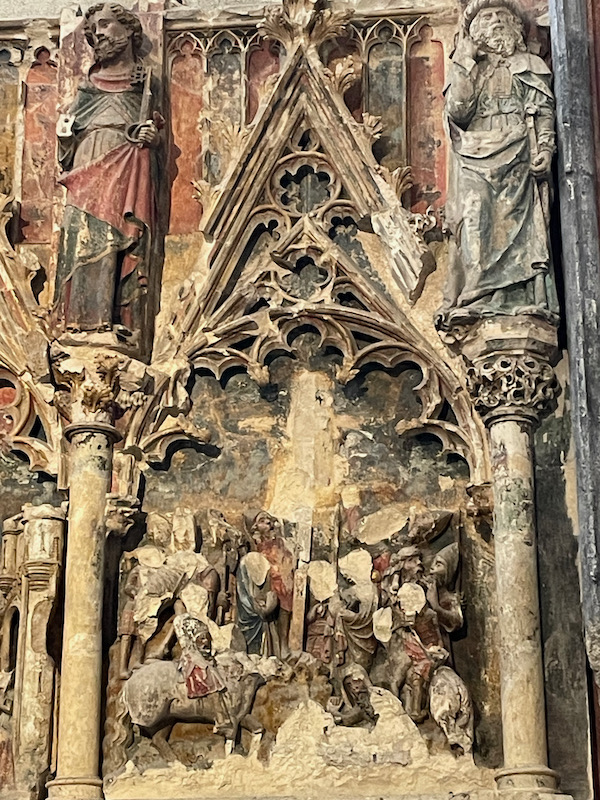
Here you can see how high the ceiling is in the choir, and the main altar with a 17th century canopy.
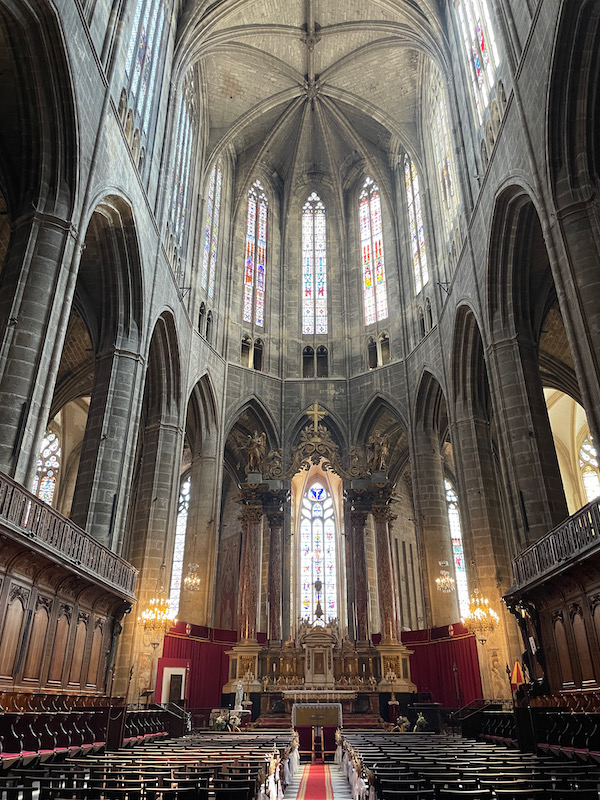
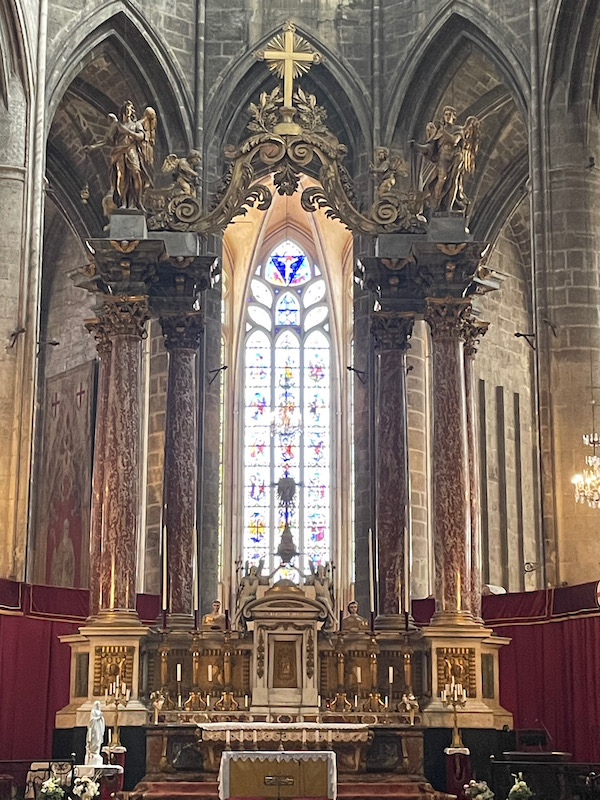
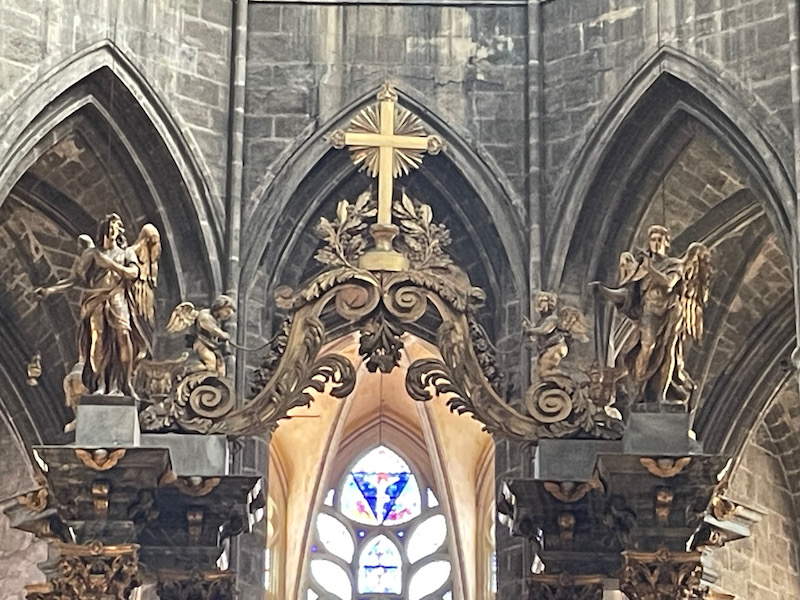
This painting is actually on the columns that are on one side of the altar, and you can see how only a portion of the old fresco is visible.
